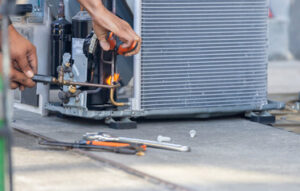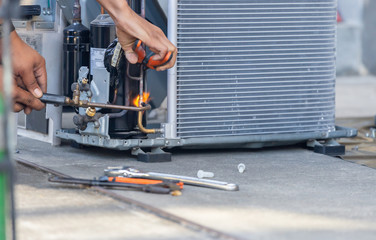Heating and air conditioning systems use various technologies to ensure that your home’s indoor air is comfortable and healthy. The science behind HVAC system design is based on principles of fluid mechanics, thermodynamics, and heat transfer. In addition to these three main functions, HVAC also filters indoor air and regulates humidity levels.
There are many different types of heating and cooling systems available, but the most common is the traditional combination HVAC system. This system heats or cools the air in your home and distributes it throughout your home or building using ductwork. This type of system is also commonly referred to as a forced-air system. This type of system uses oil, propane, or natural gas to produce heat.
There are two main types of boilers: gas-powered and oil-fired. The former requires a constant supply of natural gas, while the latter requires regular refills from liquid petroleum gas cylinders. In either case, the heated water passes through a valve and into a sealed combustion chamber, where an electronic igniter ignites the gas. Older boilers use a permanent pilot light to ignite the gas.
Boilers for heating & air conditioning have a long history of use and continue to be popular today. While they may not be suitable for every home or homeowner, they are an excellent solution for many situations. Here are some of the major benefits of boilers: Hydronic heating involves circulating heated water beneath the floors, which radiates out to warm objects in the room. This eliminates the danger of heat loss through ducts and lowers the risk of hot surfaces being touched by people.
Boilers differ in their efficiency, capacity, and fuel type. The type of boiler you choose will determine how much it costs to replace it. The most inexpensive option is a gas boiler, which uses a pilot light to ignite the natural gas and heats the pipes to radiators.
Boilers produce hot water and steam, which are then circulated throughout the home. Hot water then cools, transferring the heat to the air. The hot water then returns to the boiler to be reheated, and the cycle begins again. In both cases, a thermostat is used to regulate the temperature of the water.
Another benefit of boilers is that they use less fuel than a furnace. This means less maintenance and fuel costs. Boilers also produce consistent heat throughout the home, unlike furnaces which tend to blow air all over the place.
Ductless mini-split systems are an excellent choice for homeowners who wish to lower their utility bills. These systems operate on less power than traditional forced-air systems, and they allow homeowners to zone their homes. Because ductless systems are smaller, they can be installed in a single day. Instead of ductwork, mini-split systems use a line from the indoor unit to an outdoor unit. The line can run down the side of the home or around the corners of the house.
Another benefit to ductless mini-splits is that they are easier to install. Installation only requires a three-inch hole in the wall to hook up the indoor unit to the outdoor unit. Manufacturers typically offer multiple conduit lengths and can make it possible to install the unit in an inconspicuous location.
A mini-split system is ideal for homes with limited space. Because they can be installed in a small area, they are perfect for room additions or selective area climate control. There are two basic components of a mini-split system: an outdoor compressor unit and an indoor fan and evaporator unit. The indoor unit is connected to the outdoor compressor unit by a refrigerant line. This way, the air is cooled as it travels to the outdoor compressor unit and returns to the indoor unit. This design makes installation easier and more convenient than a traditional duct system, which requires cutting into walls and floors.
Ductless mini-split systems are environmentally friendly, energy-efficient, and customizable. Homeowners can control temperatures in specific rooms, which helps them stay comfortable throughout the year. They can even be installed in buildings with ducted forced-air systems to offer more precise climate control.
